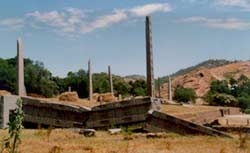A once top-secret project of China, covering an area of 800,000 square meters, has propelled the country to research numerous technologies for infrastructure development.
In 1965, China mobilized thousands of workers to construct a massive tunnel complex. Previously, this project was kept entirely confidential as it was intended to host important internal meetings. It was only later that the project was unveiled and became a popular tourist attraction.
This project is known as Project 6501, dubbed an underground maze. Completed after seven years of construction, it is divided into three levels: upper, middle, and lower, with the upper and lower levels interconnected, resembling a maze. The structure spans 17 kilometers, with an area reaching 800,000 square meters, featuring large tunnels designed for trains and smaller tunnels for vehicles.

The structure spans 17 kilometers, with an area of 800,000 square meters, featuring large tunnels designed for trains. (Illustrative image).
Furthermore, China also constructed an oil refinery with an annual processing capacity of 1.5 million tons within this project. The tunnels can be accessed by both trains and vehicles, allowing for the transport of thousands of tons of petroleum products, materials, and machinery into the underground complex.
After encountering many challenges during the construction of Project 6504, China developed new technologies for tunnel construction. Specifically, China has developed a digital shield technology system for tunneling.
This technical system aids in the automatic assembly of segments and the automated transportation of materials, further improving the stability of tunnel quality and the efficiency of excavation. The digital smart shield excels in tunnel construction, ensuring quality, safety, and efficiency. Additionally, China has integrated fine sand tunnel construction technology to address challenges encountered during the excavation of the Tofu Nao tunnel.
To tackle rock collapse issues during construction, China has specially developed a new geological technology. This technology utilizes artificial intelligence to closely monitor the environmental conditions within the tunnel and assess the likelihood of rock collapse based on measured data. After analyzing the parameters, this technology alerts engineers to avoid construction in high-risk areas, thereby ensuring safety during the project.
Moreover, China has developed robotic 3D printing technology for modern tunnel construction. After years of development, Chinese robots have become proficient in 3D printing tunnels in underground spaces, while digital ground measurement technology is used to create new databases and generate digital models, meaning tunnels are built first, followed by excavation.
This innovative method allows for faster, cheaper, safer, and more environmentally friendly tunnel construction. Additionally, the new technology carries lower project risks compared to traditional tunnel construction methods.
Subsequently, China employs several automated drilling robots designed to bore into rock and soil, shaping the tunnel’s outline. These automated robots can navigate within the borehole with extreme precision, utilizing a linked technology to create the structural shell of the tunnel.
Once the earth and rock within the shell are excavated, the damaged sections are removed using remote-controlled excavators, and successive layers of concrete are sprayed onto the shell. Additionally, secondary drilling pipes are used to equip monitoring technology aimed at enhancing the long-term maintenance and safety of the tunnel.
In the final stage, it is necessary to install the tunnel lining and sensor locations to facilitate long-term monitoring of the tunnel’s condition and preventive maintenance. After the excavators complete their tasks, other machinery, such as concrete spraying robots or slipform machines, can traverse the tunnel to install the secondary lining that meets the tunnel’s requirements.





















































